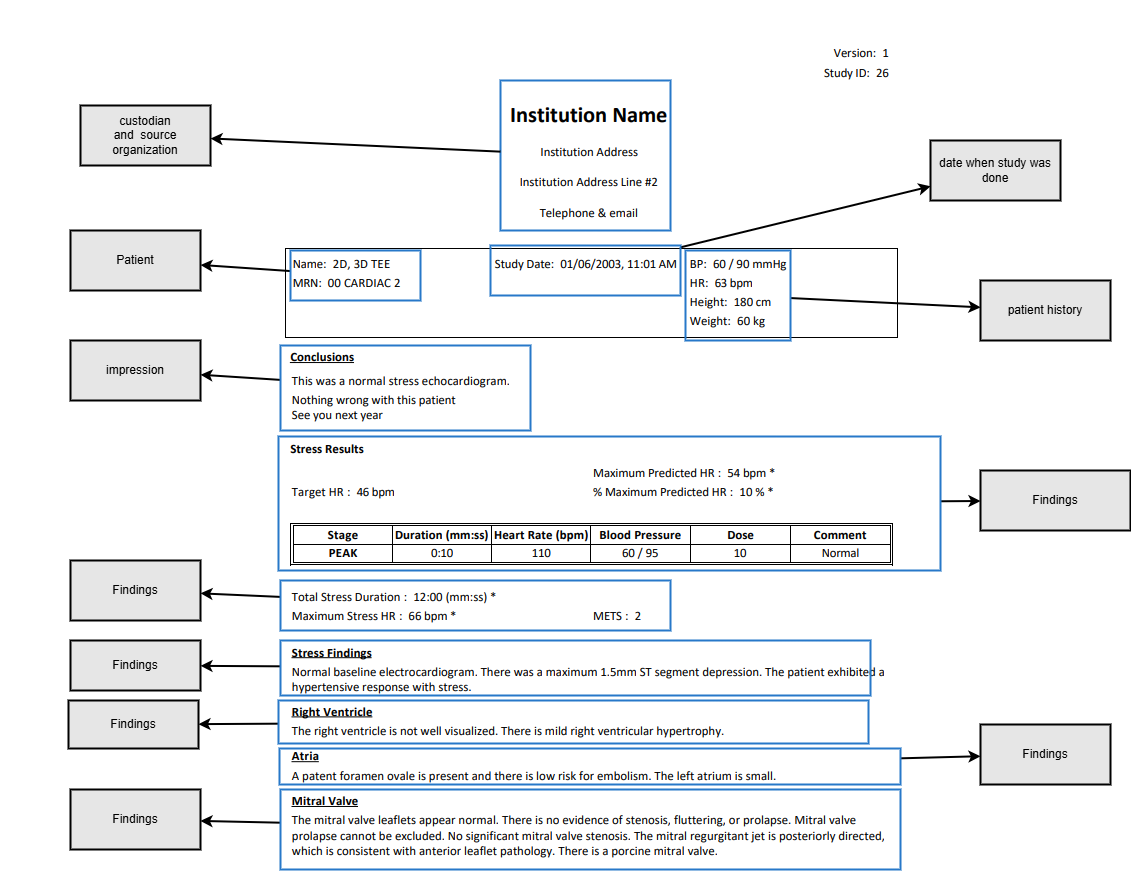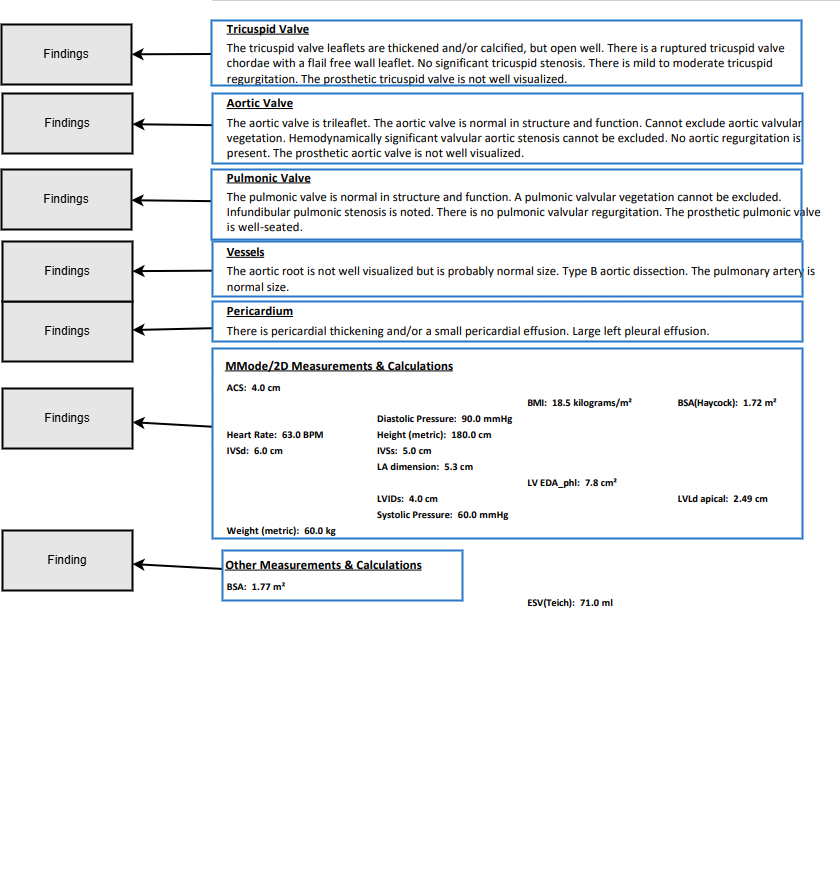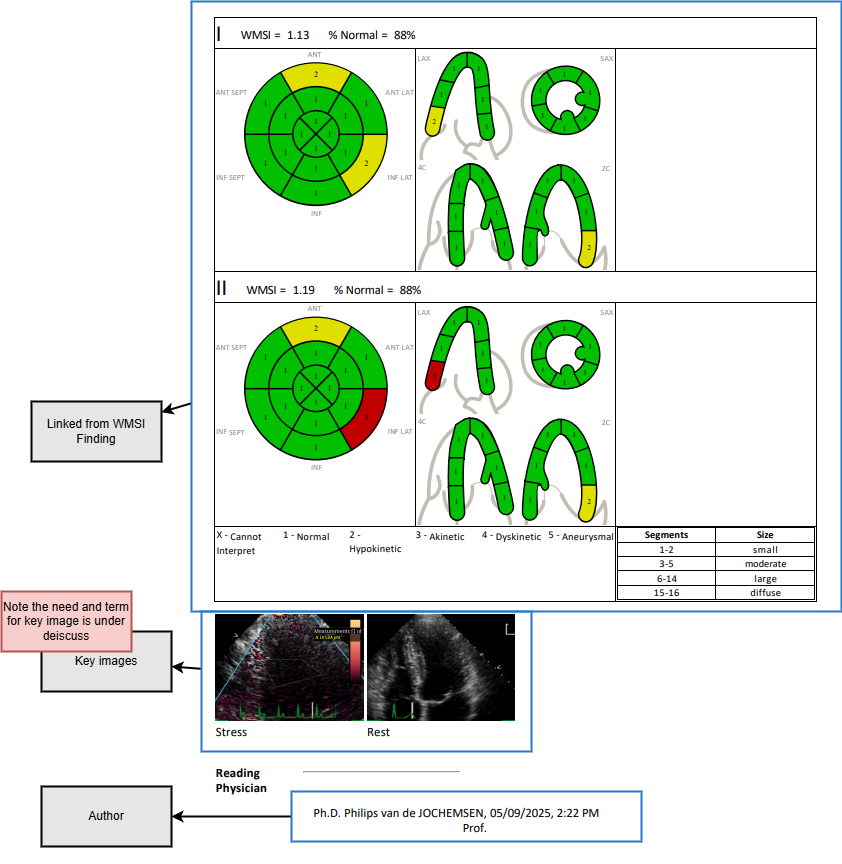HL7 Europe Imaging Report R4, published by HL7 Europe. This guide is not an authorized publication; it is the continuous build for version 0.1.1-build built by the FHIR (HL7® FHIR® Standard) CI Build. This version is based on the current content of https://github.com/hl7-eu/imaging-r4/ and changes regularly. See the Directory of published versions
This example addresses representing a imaging report that in the report structure with mostly structured data.
The figure below shows the pdf of the report. The document is annotated to show where what part of the report goes in the FHIR document.



The set of resources related to this example is much larger than the previous one so a uml diagram does not really add value. Instead we will focus on some aspects of the example.
The figure below shows the main structure of the report.
As in the previous example the report consists of a and a resource. The study the report is about is represented by an resource. The different resources point to the Patient and the author. The author is represented by an PractitionerRole, Practitioner and Organization resource. The Organization is also the custodian of the report.
This report contains structured data in the patient history section. It points to height, weight, heart rate and blood pressure observations for the patient.
The finding sections hold the notes indicated in the report and references to observations of the different wall motion index scores of the different segments indicated in the graph on page three of the report. These observation include a reference to a DocumentReference resource which holds the image itself.
The document contains two key images. These are included as DocumentReference resources.
The figure below illustrates the way the conclusion is represented.
The conclusion of the report is reflected in text in the DiagnosticReport.conclusion and Composition.section.extension[note]. The suggestion to do the same exam again is represented as a ServiceRequest resource with the field intent set to proposal.